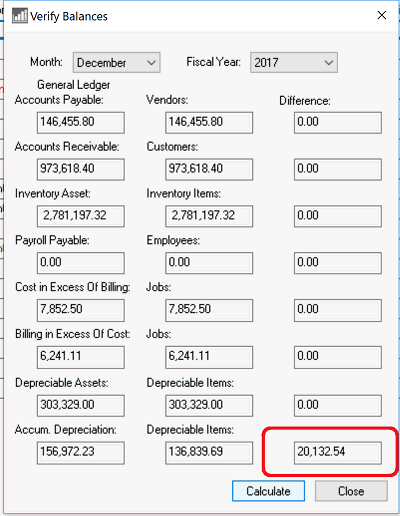Go to . The following
window will appear:

In the Month block, choose the month that is to be verified. Since this utility is verifying month end balances, a quick way to check all months is to set the Month field to the last month of the fiscal year.
Check that the Fiscal Year is correct. If not, choose the correct one.
Click on the Calculate
button. The system will check the balances and show the numbers for
each area and the difference if any.

If there is a difference in any of the accounts, a
journal entry will be necessary to make sure that the G/L balance
equals the balance of the corresponding module. This should only be
done if the cause of the difference cannot be located and changed
at the source document. If unsure of the steps to take, contact an
EBMS consultant.
If the general ledger balance is correct and the vendor, customer,
employee or inventory history year tab is incorrect, take the following
steps:
Adjust the general ledger account to match history totals since history pages cannot be adjusted without also posting to the general ledger.
Create a second journal entry to adjust the history page as well as adjusting the general ledger account to its original total.